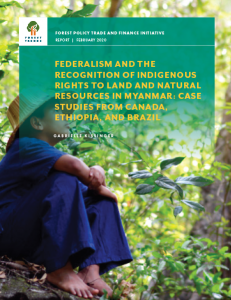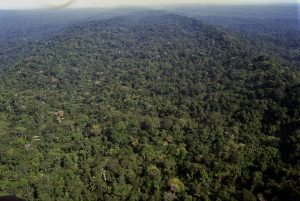Federalism and the Recognition of Indigenous Rights to Land and Natural Resources in Myanmar: Case Studies from Canada, Ethiopia, and Brazil
By Gabrielle Kissinger View PublicationThis report explores what indigenous and customary rights have been allowed and recognized in three countries that have federal systems of government and also have extensive indigenous communities and groups—Canada, Ethiopia and Brazil. The major focus of this brief is on Canada, as it was the focus of an indigenous exchange which occurred in October/November 2019. The purpose is to explore how indigenous rights have been recognized in Constitutions at federal and state levels, and how this has been affirmed (or not) through case law, legislation and regulation, and land use planning. The purpose of the brief is to explore these contexts, and highlight lessons learned in these contexts that can be useful in the Myanmar context as parties to the 21st Century Panglong Peace process explore solutions to land, natural resources and division of powers in an emerging federal system.
As of September 2019, the national peace process in Myanmar has included little discussion of issues related to natural resource governance (Woods, 2019). Of the 15 existing bilateral ceasefires in Myanmar, only five address natural resources, and rather than reform their governance, the ceasefire agreements simply allow Ethnic Armed Organizations (EAOs) to continue resource exploitation and revenue generation, while maintaining centralized Union government control. The current system of federalism in Myanmar gives very little authority to states/regions, and is silent on how a ‘third tier’ of governance and decision-making (e.g. ethnic governance) will be recognized in this system.


